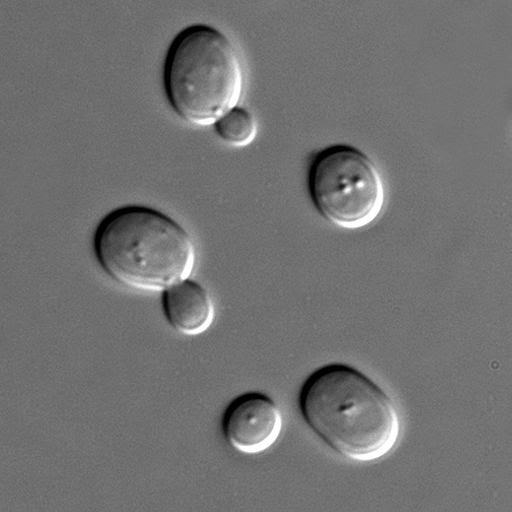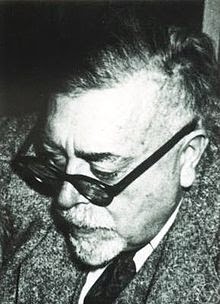All Things
· Autopoiesis: a complex system, separated from the environment, organized as a network of processes and components that interact, transform and regenerate the network that produced them, i.e. able to reproduce itself (Maturana, HR, Varela, FJ, Autopoiesis and Cognition: the Realization of the Living, D.Reidel, Dordrecht, 1980). With this definition, a living cell is an autopoietic system, but there may be others where the presence of life is not so clear, as Norbert Wiener?s self-reproducing machines (Cybernetics, MIT Press, 1948 and 1961).
- Darwin?s Mistake
Charles DarwinConsider the following paragraph by Darwin in The descent of man (chapter 5):With savages, the weak in body or mind are soon eliminated; and those that survive commonly exhibit a vigorous state of health. We civilised men, on the other hand,...
- The Invention Of The Genetic Code
As is well known, the genetic code is the representation of the amino acid sequence of proteins by means of DNA strands. Now, the proteins of living beings are made of 20 different amino acids. However, there are only four different nucleotides in DNA....
- How Eukaryotic Cells Arose
Examples of eukaryotesThe discovery that there are two main types of living cells (prokaryotes and eukaryotes) gave rise to a revolution in the way of classifying living things. Although (as usual) biologists do not agree on a single classification, the...
- Sex And Species, Two Related Concepts
Taxonomic categoriesThe species is the basic taxonomic category used by biologists to classify living things. The other categories (genus, family, order, class and phylum) are considered artificial and arbitrary. On the other hand, we tend to regard the...
- Classifying Living Beings: Cladistics Or Complexity Levels
The tree of lifeSince Aristotle, living beings have been classified in kingdoms. At first there were two: plants, practically unmoving, and animals, capable of active movement.When Antony van Leeuwenhoek discovered microorganisms, biologists tried to...
All Things
What is life?
 |
| Saccharomyces cerevisiae |
After a century discussing about the origin of life, we are not closer to knowing what did happen. In the mid-twentieth century, when Stanley Lloyd Miller performed the famous experiment where he applied energy to a mixture of methane, hydrogen, ammonia and water, and obtained amino acids, scientists announced the imminent manufacture of artificial life in the laboratory. Such estimates are often too optimistic. In this case they were.
The first question to be solved here is what is meant by being alive. If we consider the problem carefully, we?ll find beings that are clearly alive and others that definitely are not. Plants, animals and ourselves are alive. Stones, distilled water, carbon dioxide, are not. In these cases deciding is no trouble. When Antony van Leeuwenhoek discovered microorganisms (yeast, infusorians, bacteria, spermatozoa and red blood cells) nobody doubted that they are alive. But things are not always so simple.
The first doubtful case arose with the discovery of viruses. They are much smaller than the smallest cells and consist of a single DNA or RNA molecule in a capsule of proteins and other substances. Initially they were considered simple chemical poisons (hence their name). Later they were thought to be parasitic cells that have lost almost all their components.
Aristotle defined living beings as organized entities, endowed with continuous and immanent movement, complex beings formed by simpler parts, able to move on their own. This definition is not satisfactory, as today it applies to inanimate beings. An airplane on autopilot consists of thousands of parts interacting in complex ways, and is able to move by itself, at least for a time, but is not alive. On the other hand, a lichen or a bone cell barely move by themselves, but no doubt they are alive.
Another much used functional classic defines living beings as entities that are born, grow, feed, interact with the environment, reproduce and die. But today we have robots capable of interacting with their environment and charge their batteries by plugging into an outlet, which means that nutrition and relationship are not now exclusive of living beings. Only reproduction is still out of our reach.
H.J.Muller (1966) defined life thus: every being able to reproduce with inheritance and variation, choosing the criterion of the ability to reproduce as the touchstone for life. Other biologists, such as John Maynard Smith, think that this approach is too broad, as nucleic acids would be alive, since they are able to reproduce with inheritance and variation. Therefore they add another criterion: a living being is able to reproduce and metabolize, which would exclude nucleic acids.
Recently two concepts have been introduced that, although not exactly defining life, clear the field of study and pave the way towards a fuller understanding:
· Autocatalysis: a chemical species that catalyzes a reaction which generates the same chemical species. An autocatalyst is a chemical capable of reproducing under certain conditions. Ribozymes are autocatalytic substances, but there are others.
 |
| Norbert Wiener |
Some thinkers think that all autopoietic systems are living beings. Others go further and also include autocatalytic systems. At this point, and at the border, we are not very clear on what is alive and what is not. Before addressing the problem of the origin of life, or thinking about creating life, we should resolve this issue, which perhaps belongs more to philosophy than to science.
The same post in Spanish
Manuel Alfonseca
- Darwin?s Mistake
Charles DarwinConsider the following paragraph by Darwin in The descent of man (chapter 5):With savages, the weak in body or mind are soon eliminated; and those that survive commonly exhibit a vigorous state of health. We civilised men, on the other hand,...
- The Invention Of The Genetic Code
As is well known, the genetic code is the representation of the amino acid sequence of proteins by means of DNA strands. Now, the proteins of living beings are made of 20 different amino acids. However, there are only four different nucleotides in DNA....
- How Eukaryotic Cells Arose
Examples of eukaryotesThe discovery that there are two main types of living cells (prokaryotes and eukaryotes) gave rise to a revolution in the way of classifying living things. Although (as usual) biologists do not agree on a single classification, the...
- Sex And Species, Two Related Concepts
Taxonomic categoriesThe species is the basic taxonomic category used by biologists to classify living things. The other categories (genus, family, order, class and phylum) are considered artificial and arbitrary. On the other hand, we tend to regard the...
- Classifying Living Beings: Cladistics Or Complexity Levels
The tree of lifeSince Aristotle, living beings have been classified in kingdoms. At first there were two: plants, practically unmoving, and animals, capable of active movement.When Antony van Leeuwenhoek discovered microorganisms, biologists tried to...
